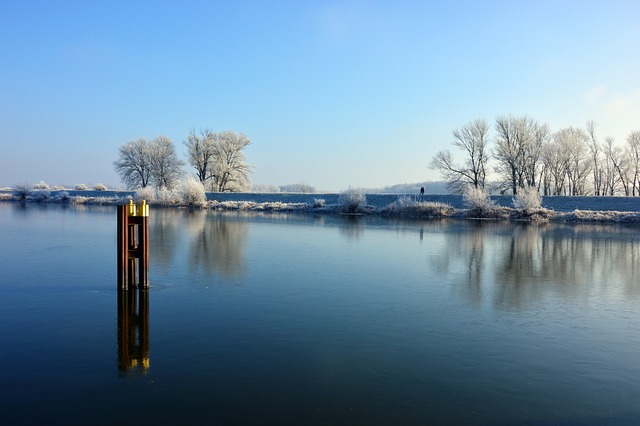
Catching bass in the Northwest during the winter is a challenge, targeting them on the Columbia River can add another few degrees of difficulty.
I have created a list of baits, setups I use for each technique, and the conditions for which I choose what to use. This list is not in order from best to worst, it’s just a list of the top baits that have produced the best for me.
When we get to the end of November or at the first snowfall, I will begin to spend most of my time chasing Smallmouth bass.
1. Blade Bait
2. Deep Crank
3. Jerk Bait
4. Drop Shot
5. Spoons
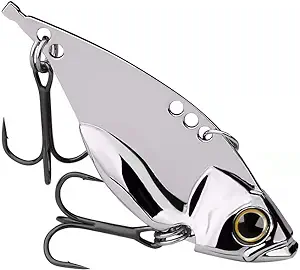
1. Blade Bait
I have found the blade bait to be most effective on rocky bottoms, in water at least 20ft deep, and will fish it down to about 60ft.
Let the bait sink to the bottom of the river and jig it up and down off the bottom as I drift down the river, the slower the better in the winter.
This method will also attract walleye and I have even caught catfish on the blade bait.
From the bank, it’s best to cast it far and upriver to give it time to sink in the current. You want to jig it off the bottom or do a slow retrieve.
Set-up
Medium 6-8ft rod with a fast action, paired with a 300 or 3000 series spinning rod.
I use the same type of fishing line for all my spinning real techniques, I choose a 12-pound fluorocarbon leader tied to a 30lbs braid.
If you have your line preferences by all means go with it, I use 12 lbs floro for almost everything.
Colors and Sizes
I go with a bronze or silver-colored blade bait and a variety of weights from ¼ to ¾ oz. You want to avoid any slack in your line as the blade bait descends to the bottom, it’s common for it to get twisted up in the line as it falls.
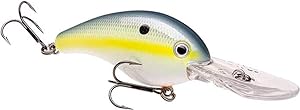
2. Deep Crank
I use this method all year long on the Columbia River and is one of my favorite techniques to catch big Smallmouth that are hanging out on the deep ledges.
I am looking for water that is from 20-35 ft deep with a rocky bottom on a ledge or on a point. I also look for areas where the soft bottom and hard bottom meet.
To get the correct depths you will need to cast far and reel quickly to get the crankbait down to the bottom of the river, and choosing the correct setup is important for this technique.
Set-up
A deep cranking rod is necessary, it will help with the fatigue that is caused by reeling in crankbaits all day, it can be a workout.
I use a 7ft Odyssey Elysian Fishing Rod, it’s the only rod I have purchased that only serves one purpose.
I use an Abu Garcia Revo Winch, anything with a ratio of 5-6 will be sufficient. I use straight 12lbs fluorocarbon.
Colors and Sizes
I use a variety of different colors, sizes, and brands but I would recommend the Strike King 6xd or the 8xd.
For clear water, I use the Natural Shad color and for darker water, I use chartreuse or a crankbait with an orange spot on its bottom.
During the winter I will use a pause retrieve method and give the crank bait time to float and get the attention of bass that may be suspended.
If you are getting more bites on the pause, I would switch to a shallower crankbait to keep it in the strike zone for the entirety of the retrieve.

3. Jerk Bait
A jerk bait is a good choice on the days when the bite has been slow, it’s a versatile bait that can be fished slowly, fast, and sporadically.
In the colder months, I have found it to be more productive to let the bait sit idly in the water column with minimal movements, reeling the line a couple of rotations at a time, instead of sharp jerking motions, has been more effective for the reaction strike.
I will tie a jerk bait on when fishing rip rap or submerged grass in water no deeper than 10 feet, occasionally I will use a deeper diving jerk bait and fish submerged grass in deeper water. This is my favorite bait when fishing from shore, especially around docks.
Set-up
I prefer a medium rod with a fast action, I have used a spinning reel and a bait caster, with 12lbs fluorocarbon. I like to keep it simple, the setup for using a jerk bait is pretty simple, if you have a go-to rod that you use for most techniques, it will be enough for jerk bait fishing.
Colors and Sizes
I like to use the Rapala Shadow Rap, silver body with an orange spot on the bottom or a perch color.
I have had the most success with a silver body, darker top, lighter bottom with an orange spot towards the bill of the bait, you will find a lot of different color combinations for jerk baits.
Shopping for jerk baits can be overwhelming, but I found something that works for me, and I stick to it. Not saying that’s the correct way of doing things but I prefer to keep things simple.
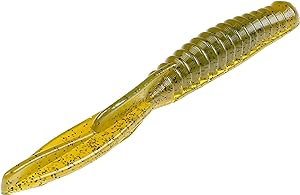
4. Drop Shot
In the winter fishing slower is the best way to catch more fish consistently and the drop shop is the best method for slowing down.
My method for fishing a drop shot is a short cast, letting the weight hit the bottom and drift slowly downriver, I don’t use any action just let the bait do its thing in the current.
I prefer to fish the rocky or hard bottom of the river. In the winter I tie the hook higher up the line to keep the bait off of the bottom and in the strike zone of suspended bass.
Set-up
A medium light rod with a spinning real and 12 lbs fluorocarbon, the same setup you would use for other finesse fishing techniques.
Pencil weights will snag less often than round weights when fishing large chunk rock, and I will choose tungsten over lead for drop shot fishing.
Baits
There are a lot of options when it comes to drop shot baits that are effective in the Columbia River, some days any color from and manufacturer will work, and other days it’s one specific color and design.
If you have a bait that you are confident in, go for it. I use the Strike King Half Shells in a variety of colors. Roboworm has a pink and purple worm that has caught fish consistently for me.
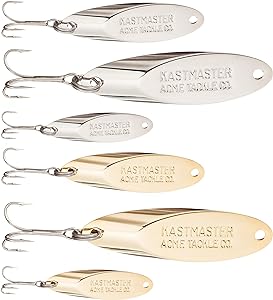
5. Spoons
A classic bait that catches a lot of different species and is often overlooked by bass fishermen. You can cover a lot of water in a short time using a spoon, they are easy to cast and require little effort as far as technique goes.
I use them on the sunnier winter days, when the fish are more active, and chasing bait in shallow water. Spoons are also a good choice for bank fishing.
Set-up
A medium moderate action rod is perfect for spoon fishing, I pair it with a spinning reel. Don’t over complicate the set up for spoons, just need to cast and reel in a chunk of metal.
Keep it simple. Spoons come in a lot of different shapes and sizes, I would start with a silver, gold, or bronze color and ¼ to ½ ounce weight. Kastmaster is my go-to brand for spoons I also use daredevil spoons.
Conclusion
Winter fishing can be tough for any angler regardless of experience, don’t give up, all of my smallmouth PBs have been caught in the winter.
There are some consistencies in the techniques as far as what kind of cover is targeted for smallmouth in the winter.
Rocks, current, and deeper water are areas to look for when fishing for big winter smallmouth. Let me know if you have any questions, stay safe, stay warm, and when the rods are out the fun begins.


Leave a Reply